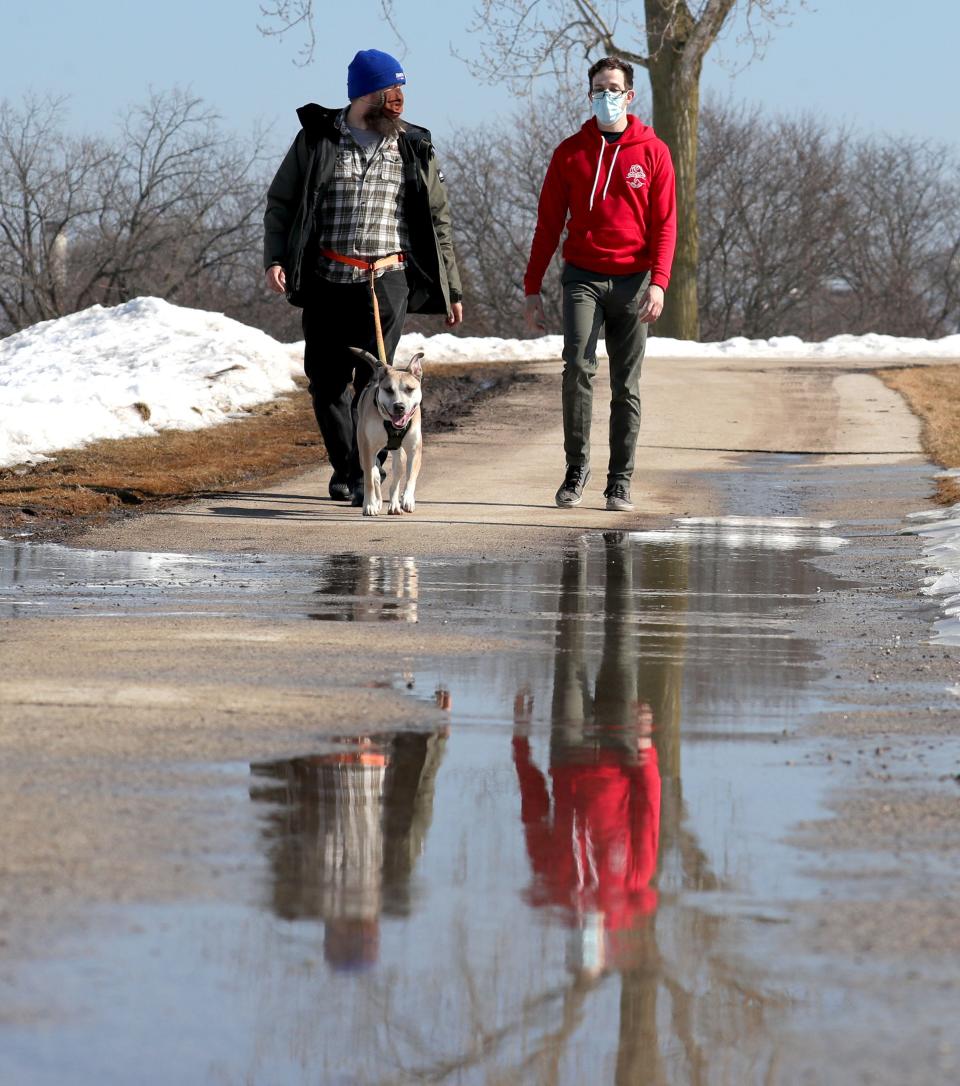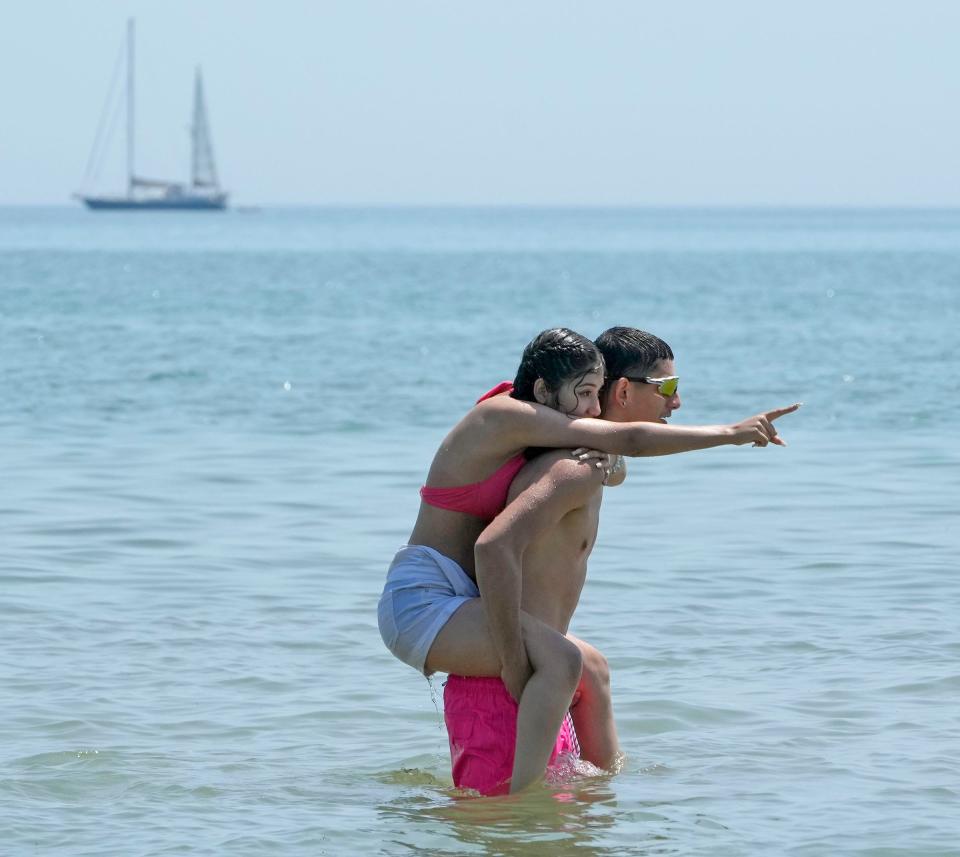It's been Milwaukee's warmest winter ever. Does that mean we're in for a hot spring and summer?
Golf courses are open again. There's no snow on the ground. And on Wednesday, it was 60 degrees. It's only February.
However, this is no regular second month of the year. This February is on track to be the warmest ever in Milwaukee's recorded history. High temps have been above normal every day this month but two, and the unseasonable warmth is expected to continue through the month's end, with many days seeing highs in the 50s. Normal temperatures for this time of year are in the mid-30s.
This February is the latest in a season of record-setting months. December was Wisconsin's warmest last month of the year on record; it was 10.9 degrees warmer than normal, on average. And, even with a nine-day cold snap, this January was the state's 10th warmest on record at 8.5 degrees above normal, on average.
It will almost certainly be the warmest winter on the books in both Milwaukee and Wisconsin history.
Understandably, this ultra-warm winter has left people wondering whether the above-normal temperatures will continue into the spring and summer. Here's what local National Weather Service meteorologist Jaclyn Anderson had to say.

Why has winter been so warm this year in Milwaukee?
The primary culprit behind the unseasonably warm winter is a weather phenomenon known as El Niño.
An El Niño event is caused when sea surface temperatures in the central and eastern Pacific Ocean warm to above average for several months. During an El Niño, the polar jet stream is shifted northward, which limits how far south cold air intrusions from Canada can travel into Wisconsin, Anderson explained.
In general, El Niño brings above-average temperatures to the northern United States, which often result in below-average snowfall in moderate-to-strong El Niño years. Last year, the Milwaukee-area NWS said this winter's El Niño was on track to be one of the strongest on record.

Will spring be warmer than normal this year in Milwaukee?
Milwaukee is expected to see the "tail end" of the El Niño effect in March, April and May, Anderson said.
While exact temps are unknown, this three-month period has a "higher potential for seeing above-normal temperatures" throughout Wisconsin. In the Milwaukee area, average highs at the beginning of March are between the upper 30s to right around 40, Anderson said. Typically, May sees average highs in the 60s to low 70s.
"For March, April and May, we're looking at the potential for some temperatures that are going to be above normal, but that doesn't say we won't have some cooler periods or more seasonable periods," Anderson explained. "We're looking at the three-month period as a whole and the average of things."
Additionally, Lake Michigan could dampen El Niño's warming effects on the city of Milwaukee.
"The lake will have a big influence on the temperatures, especially as we head into the spring and early summer months," Anderson said.
"Typically, ... as the lake heats up, we tend to see the lake breeze keep things locally cooler by the lakeshore. Local influences like that can have a big influence on the temperatures, especially in the Milwaukee area."
More: How does Lake Michigan affect the weather in Milwaukee?

Will El Niño effects continue into the summer?
"The impacts we get from El Niño during the winter will loosen their grip in the summer," Anderson said. "There's not a strong correlation between El Niño and what happens in the summertime."
While the Climate Prediction Center expects El Niño to become more neutral in the summer months, it also says there are "increasing odds" of a La Niña effect developing next winter.
La Niña allows more Arctic air to make its way down to the Midwest, Anderson said, and can cause the opposite effects of El Niño ― meaning we could see a colder, snowier winter in 2025.
What were Milwaukee's warmest winters and summers of all time?
Here are Milwaukee's top-10 warmest winters and summers, according to NWS records dating back to 1871.
# | Warmest winters | Warmest summers |
1 | 2023-2024 (tentatively) | 2012 |
2 | 1931-1932 | 2021 |
3 | 2001-2002 | 1995 |
4 | 1877-1878 | 1988 |
5 | 1881-1882 | 2020 |
6 | 2022-2023 | 2010 |
7 | 2011-2012 | 2016 |
8 | 2019-2020 | 1991 |
9 | 1997-1998 | 1955 |
10 | 1930-1931 | 1921 |
More: Milwaukee might see temperatures in the 60s before February is over, National Weather Service says
More: Here's what Farmers' Almanac is predicting for upcoming spring weather in Wisconsin
This article originally appeared on Milwaukee Journal Sentinel: Will Milwaukee's warmest-ever winter affect spring and summer 2024?

